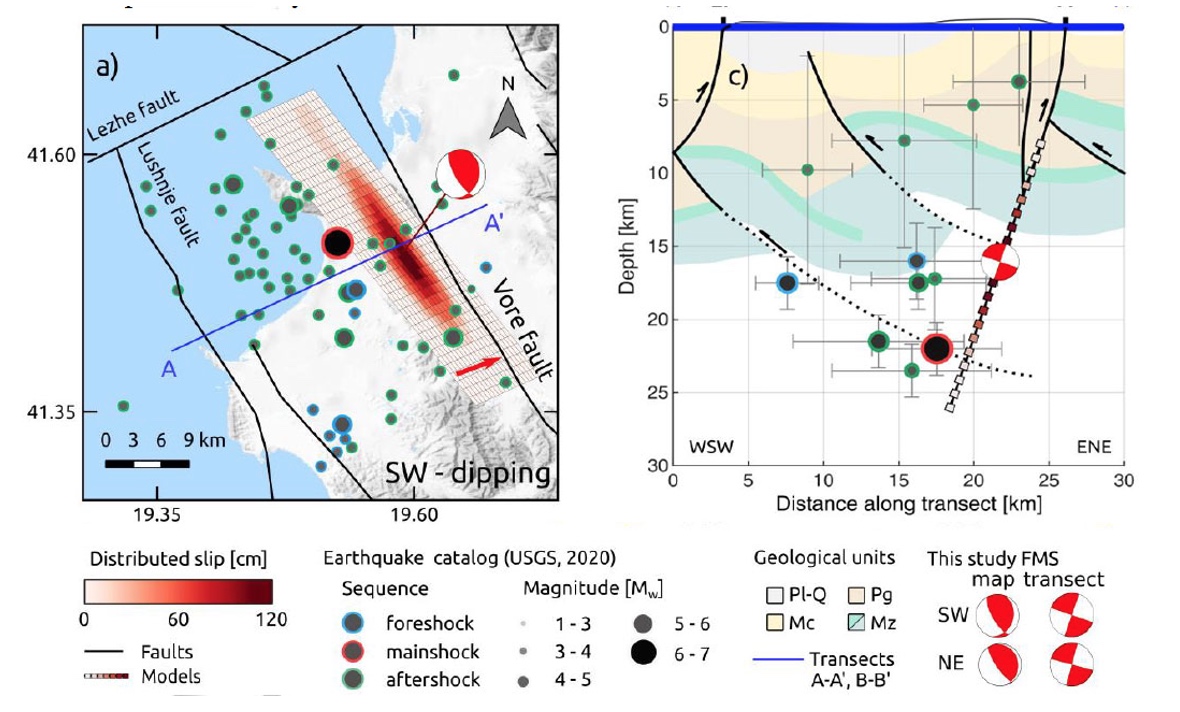Earthquake research
My earthquake research has mostly focused on the characterization and understanding of the earthquake deformation cycle using space geodetic observations. More recently, I began studying the topics of earthquake interaction and earthquake triggering, as part of my cascading hazard research.
The earthquake deformation cycle provides a simple mechanical explanation for periodic earthquake occurrence along plate boundaries and other active fault segments. The cycle includes interseismic, coseismic, and postseismic deformation stages. During the interseismic stage, active faults are locked and stresses are accumulated within the crust around the locked faults due to steady movement of tectonic plates or blocks at depth. During the coseismic (earthquake) stage, stresses on fault surfaces reach frictional yield level, resulting in fast slip on these faults and seismic energy release from the faults and their surroundings. Time dependent postseismic deformation occur after large earthquakes as the crust get adjusted to the new stress field by several processes, including afterslip, poroelasticity, and viscoelasticity. My geodetic earthquake research has detected all three stages of the earthquake deformation cycle along various fault systems, including the San Andreas Fault (Wdowinski et al., 1997; 2003; 2007; Wdowinski, 2009), the Dead Sea Fault (Wdowinski et al., 2004; Sadeh et al., 2012), central Asia (Fattahi et al., 2015), and Adriatic coast (Govorčin et al., 2019; 2020).
My cascading hazard research focused on studies of earthquake interaction and earthquake triggering. Our study of earthquake interaction in central Taiwan evaluated the impact of crustal stress changes due to preceding earthquakes (Li et al., 2020). Our study found that 5 out of 13 M>6 mainshock earthquakes occurred in the study area since 1900 were promoted, 7 were inhibited, and 1 was below a detection threshold. Our study of earthquake triggering in the same study area evaluated the impact of rapid erosion due to wet typhoon and landslides on stress changes at earthquake hypocenters. The results of this study indicate that erosion in central Taiwan over the past 40 years has increased stresses on active faults in the area and one case promoted the occurrence of an M>6 earthquake.

Figure 1. Geodetic source modeling of the 2019, Mw 6.3 Durrës, Albania earthquake. a) Map views of the distributed slip model with the epicentre locations (circles with a red stroke: mainshock, blue: foreshock, green: aftershock; Source USGS 2020). Blue line marks the location of vertical seismicity transects presented in c). Red arrow represents the model slip rake vectors. c) Vertical transects oriented normal to the dip of the tilted distributed slip model showing the fault trajectory (black lines with colored squares; color represents slip value), earthquake hypocenters (circles), and geological settings. [Modified from Govorčin et al., 2020].
Earthquake research publications: Wdowinski et al. (1997); Wdowinski et al. (2004); Wdowinski et al. (2009); Wdowinski (2009); Yin et al. (2013); Yin and Wdowinski (2014); Fattahi et al. (2015); Weber et al. (2015); Zhang et al. (2017); Govorčin et al. (2019); Govorčin et al. (2020); Li et al. (2020);